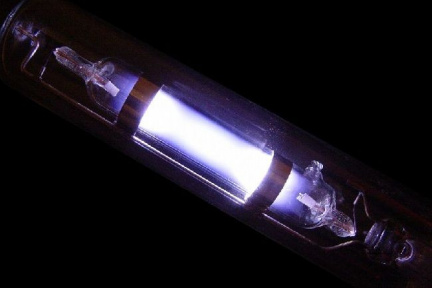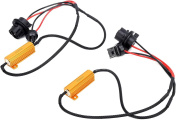
HID, or high-intensity discharge, headlights are becoming more and more popular. They give your car a sleek, updated look and provide better visibility on the road. However, many people are unsure how to determine which HID light color suits their vehicle. With all the options for headlights, it's hard to know which ones to choose.
This guide will cover everything drivers should know about the Xenon color chart, including the importance of color, temperature, and light output. By the end of this guide, drivers will better understand how to choose the right HID headlights for their cars.

What is the Xenon Color Chart?
The Xenon color chart is a tool that helps drivers understand the different colors available for HID headlights. The chart shows the color temperature of each light measured in Kelvin (K). The higher the Kelvin rating, the bluer the light will be. A lower Kelvin rating will result in yellow or amber light.
The brightest HID color is pure white light with a color temperature of 6000K. This is the color often seen on luxury cars like BMWs and Mercedes. White light with a temperature of 6000K will provide good visibility on the road without being too harsh on the eyes.
Why is Color Temperature Important?
Color temperature is vital because it affects the visibility of light. A higher color temperature means the light will be closer to blue on the spectrum, and this type of light is known to cause less strain on the eyes. This is why many people choose a white light with a high color temperature for their HID headlights.
However, a lower temperature light will provide better visibility in foggy or rainy conditions. This is because the yellow or amber light is better at penetrating the water droplets in the air.
Understanding Lumens versus Kelvin
When choosing HID headlights, it's essential to understand the difference between Lumens and Kelvin. Lumens determine the amount of light emitted from the headlight, while Kelvin measures the color temperature of the light.
A light with a higher lumen output will be brighter, but this doesn't necessarily mean it will provide better visibility. A light with a lower lumen but a higher Kelvin rating will often provide better visibility because the light will be closer to blue on the spectrum.

Choosing the Right HID Headlights
Now that you understand the Xenon color chart and the importance of color temperature, it's time to choose the right HID headlights for your car. Taking the time to select the proper headlights will ensure that you have good visibility on the road and that your vehicle looks its best.
FAQ
Q: What is the brightest HID color?
A: The brightest HID color is pure white light with a color temperature of 6000K. However, 5000K is a close second, and it is often used for HID headlights because it provides good visibility without being too harsh on the eyes.
Q: What is the best HID color for fog lights?
A: A low temperature will provide better visibility in foggy or rainy conditions. This is because the yellow or amber light is better at penetrating through the water droplets in the air.
Q: Are HID or LED headlights better?
A: HID headlights are more efficient than LED headlights and provide better road visibility. HID bulbs use xenon gas to produce light, while LED bulbs use a semiconductor to produce light.








